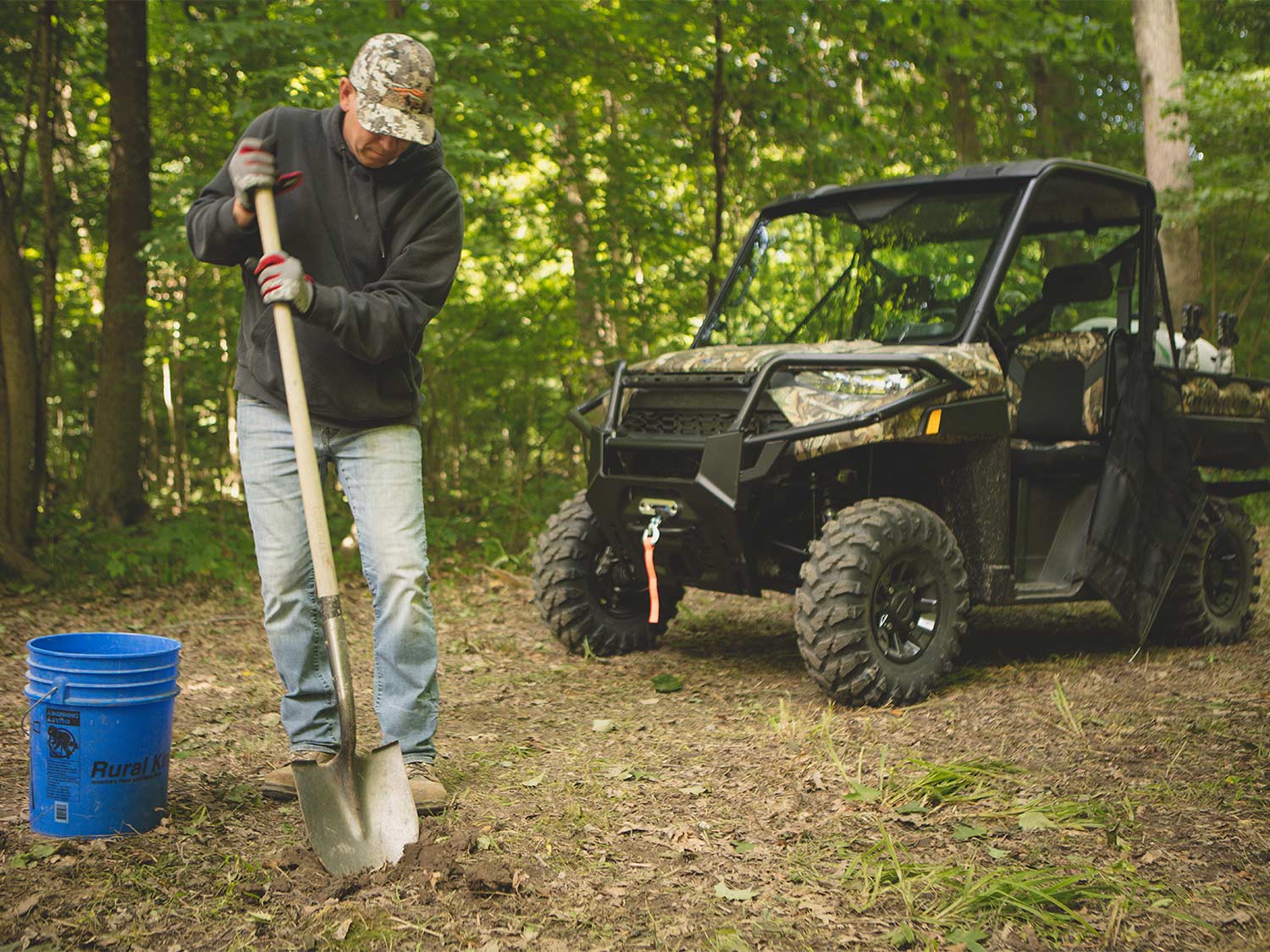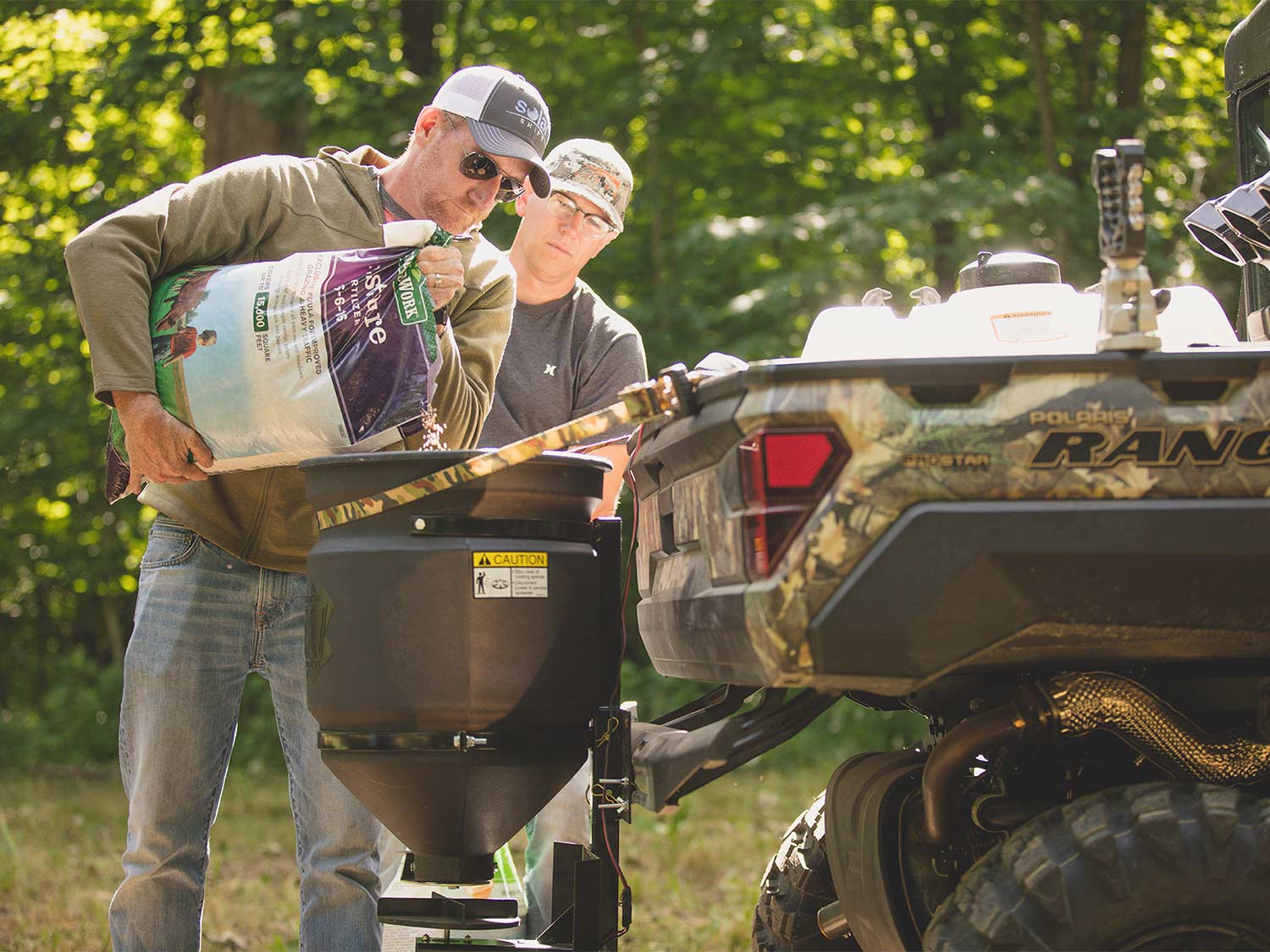
Editor’s Note: This is part 2 of a 9-part Respect the Game series on habitat improvement, whitetail management, and the tradition of deer hunting. We’ve partnered with Polaris to tell the story of the world-record buck, and the group of buddies who worked together to hunt the deer last fall. Stay tuned for more tips, stories, and videos from this series.
What’s the difference between a lush food plot and a weedy patch of dirt? About $15.
That’s approximately how much you’ll spend on a soil test. Plant a food plot without a test, and you’re doing little more than hoping that something grows. In many areas of the country with naturally good soil, something will grow. But no matter where you hunt, a food plot will grow much better under ideal soil conditions.
A soil test is easy to do. Grab a big spoon (or a shovel if you must) and get some dirt from several areas of your food plot. We want just dirt—not rocks, leaves, sticks, and such. Put it in a bag and take it to your local grain elevator or extension office. They’ll take it from there.
The soil test reveals not only what’s in the dirt you’re trying to work and what’s missing—it also provides an exact recipe for success. And that recipe is scientific. Remember high school chemistry? Yeah, me neither. Now, had my teacher told me that chemistry actually had some application to deer hunting, I suspect I’d have paid a lot more attention. So bear with me now, because class is in session.
Cation exchange capacity, or CEC, is your first chemistry term of the day. The CEC is the soil’s ability to hold onto positively charged chemicals called cations. It’s the chemical current that will deliver the needed goods to plants that will, in turn, make them flourish. Some of those important chemicals include calcium, magnesium, and sodium. In layman’s terms, the CEC has a direct correlation to the overall fertility of the soil. The lower the CEC, the lower the fertility.
Truly altering a soil’s true CEC is difficult. There are, however, chemical elements—the big three are nitrogen, potassium, and phosphorus—that can be temporarily amended, altered, and adjusted to improve the soil’s ability to process nutrients. A soil test provides a blueprint for selecting the right combination of these elements, and thus better soil chemistry.
When you receive your soil test results, it will make recommendations as to what to add. Take the results with you to a local supply store (Lowe’s, Tractor Supply, etc.) and match what’s needed on your results with the corresponding fertilizer. The elements will be labeled on the bag. For example, 19-19-19 fertilizer contains equal parts of nitrogen, potassium and phosphorous. A bag of 10-10-30, has more phosphorous, and so on.
One of the easier adjustments to make is pH level. The soil test will reveal the pH level of your dirt. A level of 7.0 is neutral, levels below 7 are acidic, and levels above 7 are alkaline. Just like with chlorine in a swimming pool, pH levels that are as close to neutral as possible help the chemical be as effective and efficient as possible. This is where CEC starts to make more sense. A soil with pH levels near neutral often have a higher CEC value and, thus, are more fertile because they’re more capable of delivering beneficial chemicals to the plant. Here are two affordable ways to change your soil pH.
1. Add Lime
Soil pH is often adjusted by adding lime, which is essentially an acid neutralizer. Even if you don’t have a tractor, there are options for spreading pelletized lime with an ATV or UTV. The effects of this correction aren’t permanent, but they are effective for short- and mid-term periods.
2. Introduce Organic Matter
Organic matter is another relatively easy amendment to improve soil fertility. You can increase organic matter by leaving crop residue near the surface of your plots (not tilling it under) or you can bring in additional organic matter in the way of compost, mulch, composted poultry litter, or manure.
As organic matter decomposes, it releases a variety of micronutrients and chemicals. These byproducts have varying characteristics—some have negative charges, others positive/ Organic matter also helps with the process of chelation, which is a type of bonding of ions and molecules to metal ions. I’ll spare you the full chemistry lesson here. Just know that chelation is critical to good soil health.
Read Next: How to Plant a Mini Food Plot This Summer
Like adding lime, the introduction of additional organic matter into the soil is not a permanent correction. It can, however, last longer than lime corrections (depending on soil type, of course). It might take longer to see measurable results than when adding lime, but correcting the amount of available organic matter can be highly beneficial to the overall chemistry of the soil and result in better food plots over time.
So no, that $15 soil test isn’t magic. But it is science that’s worth understanding.
If you want to try testing your own soil, you can get a kit here, although you’ll have to mail that in. The best place to take a soil sample is to your nearest university’s agriculture extension office (which is way easier and more common than it sounds).
